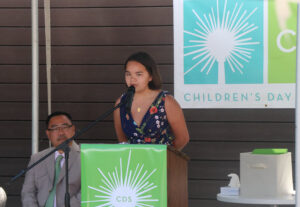The high school search and application process follows a predictable timeline and can be broken down into five steps:
1. Research Schools and Prepare for the Process (Now-August)
2. Visit Schools (September-December)
3. Apply (October-January)
4. Wait (January-March)
5. Decide (Mid-March)
Staying on top of that timeline is the best way to minimize stress and to maximize your opportunity to schedule visits, tests, auditions, shadow days, open houses, etc. at the schools you are interested in, and on the dates and times that work for your family.
Step 1. Research Your Options and Prepare for the Process (Now-August)
Take the time now and over the summer to learn about the public, independent (private), parochial, and charter school options in San Francisco and the Bay Area.
 This spring and summer, check out the high school websites. Most of the high school websites have comprehensive and prominently-displayed admission sections that answer many questions about the school.
This spring and summer, check out the high school websites. Most of the high school websites have comprehensive and prominently-displayed admission sections that answer many questions about the school.- This page lists the websites for many San Francisco and Bay Area independent and parochial schools. This is just a starting point, so please take the time to do your own research.
- There are many things to consider when beginning to explore high schools. The most important is to look for schools that fit your child.
- Create your family organizational system. You will need a way to keep track of all the dates and details involved with this process. Many families have found that a Google doc or sheet works well, as it can be accessed from anywhere. Here is a sample format which you can use. Some families also use a shared Google calendar or a combination of the student’s planner and a wall calendar. However, it is helpful if the student can access this information from school for use during the high school class, and so we highly recommend that at least part of the information be accessible electronically.
- Make note of the dates when schools begin accepting online inquiries and scheduling visits and open houses, and return to the websites as soon as online inquiries and admission schedules open. Many schools open up online inquiries, registration for open houses, shadow days, and other admission events in August. Some events fill up very quickly, so it is important to sign up as early as possible.
- The San Francisco Unified School District’s website is www.sfusd.edu. Several public schools, such as School of the Arts (SOTA), Gateway, and Leadership, have special admission procedures. Make sure you know about them (we can help with this information).
- If boarding school interests your family, you should visit the website of The Association of Boarding Schools (TABS) at https://www.boardingschools.com. Many boarding schools are happy to schedule a visit with your child on the CDS campus.
- Consider what your family can afford for tuition. Many independent high school tuitions now exceed $60,000 a year in the Bay Area; faith-based school tuitions, while less, are still substantial. While independent and faith-based high schools do have financial aid available, the number of awards are limited.
- Consider location/transportation realities. Some families, particularly those with two or more children, may prefer schools closer to home. Other families are willing to look anywhere in the city or even outside the city at high schools such as The Nueva School on the Peninsula or Marin Academy in San Rafael.
- If applicable, begin to think about and plan for standardized testing preparation. Taking a standardized test (SSAT or HSPT) is a skill and most students should be practicing the tips and strategies at a minimum. The best way to prepare for standardized tests is to practice consistently over a long period of time. Summer is an ideal time to begin this practice, since it does not compete with the work requirements of the regular school year.
- Consider attending sporting, artistic, or summer camp events at the schools you may be interested in attending.
Step 2. Visit Schools (September-December)
Students and families are responsible for signing up for open houses and other admission events, and for arranging student visit/shadow days. Much or most of this can be done online through each school’s website. Some events fill up very quickly, so it is important to sign up as early as possible.
Step 3. Apply (October-January)
The application process for independent and faith based schools typically consists of these parts:
 School application. Check this document to learn about the different application portals. Applications might include the following:
School application. Check this document to learn about the different application portals. Applications might include the following:
- Demographic information – Name, address, phone number, etc.
- Short answer questions – An example of a typical question might be “If you could meet any person from history, real or fictional, who would it be and why?” Most schools will ask why their particular school is a fit for your child. This is one of the most important questions on the application. The school wants to know that you understand who they are and that you are excited about that school’s program.
- Personal Statement – an essay, completed by the student, on a specific topic requested by the school. The personal statement is a chance for your child to show the admission committees at the high schools more about who they are or their interests. Excessive bragging does not impress the committees. Think of the personal statement as a chance for your child to speak directly to people wondering what makes them excited, motivated, or proud. This is a chance for the admission committees to hear the student’s voice. We caution against heavily editing a student’s essay.
- Parent/Guardian Essay – an essay, completed by the parents/guardians, on a specific topic requested by the school. Often parents/guardians are asked to write a “letter of recommendation” for their child or something else along this theme.
- Teacher recommendations – Teacher recommendations are the part of the application that involves CDS teachers. Schools use them as a way to find out what kind of learner your child is, how they contribute in the classroom, and ways in which they differentiate themself from other students. Schools generally request three recommendations: the English teacher, Math teacher, and Middle School Director/High School Transition Counselor. The CDS high school team will manage the teacher recommendation process.
- Transcripts – most schools request progress reports for seventh grade and the first semester of eighth grade. The CDS high school team will manage the transcript process.
- Test scores from a standardized test, such as the SSAT (for independent schools) or the High School Placement Test (HSPT) (for Catholic Schools). These tests are discussed in more detail on this page. There are many ways to prepare for the standardized test, including test prep books, prep courses, online test prep portals, and individual and group tutoring.
- Interview – the student and parents are responsible for arranging interviews. CDS provides some coaching and practice on how to interview as part of the high school class.
The application process for San Francisco public schools varies depending on the school. For public non-charter schools such as Balboa, Lincoln, or Mission High School, there is a single San Francisco Unified School District (SFUSD) application that must be completed. Public charter schools such as Gateway and Creative Arts Leadership conduct a lottery to select students, so parents must submit a separate application to participate in the lottery. Lowell High School and Ruth Asawa School of the Arts (SOTA) require that the SFUSD application be completed and also have their own applications that must be completed. SOTA requires an audition or portfolio as part of the application process. If you think your family will be interested in SOTA, you should begin to think about the required portfolio or audition and consult with Amanda Richard before summer begins. It is challenging to put together a portfolio or audition piece while also managing the regular admission process in the fall.
Step 4. Wait (January to March)
Admission decisions are released in March. From January to March, students should stay focused on school and enjoy eighth grade!
Step 5. Decide (Mid-March)
Once decisions are received, sometimes there are hard decisions to be made. This is a time to review everything you know about the schools and to have your child revisit campuses, if necessary.

